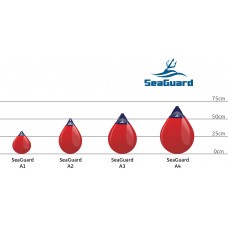Expert Tips for Using Navigation Buoys Effectively
Navigation buoys are vital aids for mariners, guiding them safely through waterways and ensuring they avoid hazards. Whether you're a seasoned sailor or a novice boater, understanding how to effectively utilize navigation buoys is essential for safe navigation. In this article, we'll delve into expert tips to help you make the most out of these indispensable navigational aids.
Importance of Navigation Buoys
Navigation buoys play an important role in maritime navigation for several reasons:
Enhancing Safety
One of the primary functions of navigation buoys is to enhance safety by marking safe passage routes, hazardous areas, and obstacles such as rocks, shoals, or wrecks. These buoys serve as visual cues, alerting mariners to potential dangers and guiding them along navigable channels.
Marking Hazardous Areas
Navigation buoys also serve to mark hazardous areas, such as shallow waters, submerged structures, or underwater pipelines. By clearly indicating these dangers, buoys help prevent accidents and protect both vessels and the marine environment.
Types of Navigation Buoys
There are several types of navigation buoys, each serving a specific purpose:
Lateral Buoys
Lateral buoys buoys delineate the edges of a passage that ships can navigate, signifying the port (left) and starboard (right) parts of the channel. Routinely, these buoys are painted red or green and carry distinct designs and light traits that underpin their importance.
Cardinal Buoys
Cardinal buoys symbolize the location of the most secure water in relation to the buoy. They acquire their names from the cardinal points (north, east, south, west) and are painted in yellow and black. They carry unique forms and lighting combinations to communicate their purpose.
Special Buoys
Special buoys serve to denote particular threats or features, like isolated perils, mooring spots, or navigational intersections. These buoys bear diverse colors, designs, and lighting arrangements conditional upon their designated role.
Understanding Navigation Buoy Markings
To effectively use navigation buoys, it's essential to understand their markings:
Colors and Shapes
Each buoy has a specific color and shape that indicates its purpose and location within the waterway. Red buoys mark the port side of the channel, while green buoys mark the starboard side. Additionally, the shape of the buoy can indicate its function, such as spherical, cylindrical, or conical.
Light Characteristics
Many navigation buoys are equipped with lights to aid navigation at night or in poor visibility conditions. The light characteristics, including color, rhythm, and intensity, provide valuable information to mariners about the buoy's location and significance.
Placement and Maintenance of Navigation Buoys
Proper placement and maintenance of navigation buoys are essential for their effectiveness:
Proper Placement Guidelines
Adhering to pre-established instructions for buoy arrangement ensures they depict the correct route or danger. Aspects such as water's depth, movements of the tides, and shipping lanes must be taken into account while deciding on buoy arrangement.
Routine Inspection and Maintenance
Frequent audits and upkeep become paramount for maintaining navigation buoys at their best. This involves examining for any damages, ensuring the lights and reflectors work as they should, and confirming correct positioning. Quick corrections and substitutions, when required, help in avoiding any navigational risks.
Best Practices for Using Navigation Buoys
To use navigation buoys effectively, mariners should follow these best practices:
Keeping a Safe Distance
Maintain a safe distance from navigation buoys to avoid collisions and ensure clear passage. Observe buoys from a distance, and navigate with caution, especially in narrow or congested waterways.
Understanding Right-of-Way
Respect the right-of-way rules indicated by navigation buoys, particularly in areas with intersecting channels or restricted passages. Yield to vessels navigating in the preferred direction as indicated by the buoys.
Navigating in Poor Weather Conditions
In adverse weather conditions, rely on navigation buoys for guidance and orientation. Use radar, GPS, and other navigational aids in conjunction with buoys to maintain course and avoid hazards.
Conclusion
For a smooth and safe sea journey, navigation buoys serve as essential aids. Comprehending their importance, distinct symbols, and the imperative application strategies, permits sailors to traverse maritime routes securely, safeguarding their ship and crew members' safety.


No comments yet